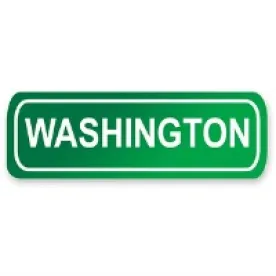Water banks, long-used in Eastern Washington to compile and transfer water rights, are emerging as a useful way to allocate water rights in Western Washington. However, water banks may also be undergoing significant changes as a result of recent legislative requirements. Even as the Washington State Department of Ecology (Ecology) announces additional water banks in new areas of the state, the 2021-2022 appropriations bill contains new requirements that raise the bar for creating water banks and transferring water rights through them. While more funding has been allocated to facilitate the creation of water banks, the legislature has also directed Ecology to more closely scrutinize the individuals and communities being served by private water banks. Water bank builders and buyers could find themselves facing additional regulatory burdens and are advised to watch closely as Ecology sorts through what this new mandate means for water banking in the state.
WATER BANKING – BASIC OVERVIEW
Water banks are a regulatory tool for maintaining water rights or changing their place and purpose of use. In general, a water bank provides a mechanism in which a water right holder can “deposit” a water right with a public or private entity (the bank) that can make the water rights available for another person or use in a downstream location. The transactions can be either permanent or temporary. The concept underlying water banks is that facilitating the purchase and sale of water rights through a free market system can help balance the demand for water and lead to a more efficient allocation of water resources.
In Washington, private water banks must be created in consultation with Ecology. The would-be banker and Ecology identify a water right for mitigation use and the needs the bank would serve. By their nature, water banks are designed to serve a specific set of customers, e.g., those that are downstream from the original point of diversion, and sometimes specific functions, such as addressing interruptible irrigation rights. Once these are identified, Ecology and the banker negotiate a trust water right agreement, governed by Ecology’s Trust Water Rights Program, to define the water bank operation and expectations. Ecology evaluates the validity of the water right or rights via a Report of Examination (ROE), which is generally made available for public review and comment. Upon acceptance and approval of the ROE, Ecology issues an order changing the water right’s purpose, identifies the quantity of water available for mitigation, and provides public notice of the change. Once any public comments are addressed, Ecology executes the trust water right agreement with the original water right holder. If the water right is intended to mitigate permanent new uses, it is deeded to Ecology. Ecology then issues a trust water certificate and posts an accounting of fees, unit price, and available water supply to the Ecology website. Once the bank is operational (and sometimes in tandem with setting up the bank), parties seeking water apply to Ecology for mitigation permits that are offset by the bank. These permits may be to improve stream flow, provide steadier irrigation, or allow increased municipal use.
WATER BANKING SUCCESSES
Water banks have enjoyed success throughout Eastern Washington, with several banks operating in the Yakima, Columbia and Walla Walla river basins. These banks have facilitated a myriad of exchanges, including the Walla Walla Exempt Well Mitigation Bank, the Lake Roosevelt and Sullivan Lake exchange in the Columbia River Basin, and the Darling Water, LLC exchange in the Yakima River Basin.
Ecology maintains a water bank tracking spreadsheet, which details the source of the mitigation rights, the available balance, the charges and fees, and the geographic extent of suitability (i.e., the service area).
While not a new concept, the banks are a relatively new phenomenon west of the Cascades. One of the earliest water banks to be established in Western Washington was the Dungeness Water Exchange. It was created in 2013 by Clallam County, Ecology, the Dungeness Water Users Association, the Jamestown S’Klallam Tribe, City of Sequim, Clallam Public Utility District No.1, Clallam Conservation District, Washington Department of Fish and Wildlife, and Washington Water Trust in response to state regulation which limited new water uses in the Dungeness Water Rule Area. The bank helps facilitate the protection of the Dungeness River while also providing water for new uses such as homes and businesses.1
The Skagit River Basin Mitigation Program, based on an Ecology purchase of water rights from Seattle City Light, was announced in late March this year. It offers a limited quantity of mitigation water to landowners with parcels located in an area designated as the mitigation zone, which is based on modeled groundwater interactions with the surface water of the Skagit River, where mitigation water is being released by Seattle City Light. The water purchased from Seattle City Light will be used to offset impacts to the Skagit River from certain new domestic groundwater uses.
CHANGING PUBLIC SENTIMENT AND PROPOSED LEGISLATION
Prompted by concerns that water banks are consolidating a public resource for private gain,2 the Washington State Legislature last year contemplated legislation that would have fundamentally changed the state’s Trust Water regime.3 H.B. 1385 would have banned the downstream transfer of water rights in seven Water Resource Inventory Areas in Eastern Washington. While that legislation was diluted down into a study group, the sentiment remains among some stakeholders that water banking is potentially detrimental.
Enter legislative session 2021, in which the final operating budget included several provisions related to water banking. On the plus side, the budget includes $9,000,000 in appropriations to Ecology “to administer [a] pilot grant program for water banking strategies to meet water needs described in this section.”4 The needs identified by the Legislature include agricultural use and instream flow for fish and wildlife. The water bank must also preserve water rights for use in the county of origin and for permanent instream flows for fish and wildlife through the primary and secondary reaches of the water right. Some limitations attach to these grants including, among others, that grants (1) must be limited to US$2,000,000 or less per applicant; (2) may only be used for development of water banks in rural counties that have headwaters of a major watershed within their borders and only for water banking strategies within the county of origin; (3) one-third of any water rights purchased with these funds must have its purpose permanently changed to instream flow rights benefiting fish and wildlife; (4) water banks must be intended to provide a local public benefit; and (5) the applicant must be a public entity or a participant in a public/private partnership with a public entity.
The trickiest part of this package, at least as it relates to water banking, is funding for Ecology to “[d]evelop recommendations and implement actions under existing authority to modify the process for the review of water banks to ensure that key information is made available to the public.”5 The bill instructs Ecology to consider whether certain qualifying information should be required as part of a water bank application package. This information could potentially include an outline of the needs and customers the bank will serve, the geographic area to be served, available mitigating rights, changes in mitigating rights, limitations the bank intends to impose, and “anything else the department deems necessary to promote transparency and the public interest.” The budget also suggests Ecology consider imposing reporting requirements on water banks when they implement changes in the customers or needs being served by the water bank.
Ecology must also consider whether such changes should trigger a public comment period. While any potential water bank would likely perform its own diligence to determine whether and where to market its water rights, potentially adding these additional application requirements creates another regulatory hurdle for water bankers, as well as another burden on Ecology to review and approve.
Finally, the funding package includes an instruction for Ecology to “refine” its recommendations on improving Washington’s framework for water banking, water trust, and water rights transfers. The mandate also requires Ecology to address issues relating to private investment in water banking and the merits of incentives and regulations pertaining to out-of-basin transfers of water rights.6
POTENTIAL IMPACTS
Water banks have been an instrumental tool in re-allocating a public resource as Washington’s economy evolves. Their utility stands at an interesting cross-roads. On the one hand, they have agency staff dedicated to their evaluation and facilitation and well-established regulations and norms of operation. On the other hand, due in part to their increasing prominence, they are at the center of a public debate about the highest and best use of a public natural resource.
Stakeholders are encouraged to track this issue closely in order to understand and participate in the conversation and potential future legislation. Interested parties should engage with Ecology on how best to grapple with implementing the new grant funding requirements and the new parameters for disbursement of funds as well as the evaluation of water markets generally.
Footnotes
1 See About Us, Dungeness Water Exchange.
2 See Evan Bush, Wall Street spends millions to buy up Washington state water, THE SEATTLE TIMES (Oct. 27, 2019, 6:00 AM).
3 See H.B. 1385 (2021-22), Limiting transfers of water rights out of their original water resource inventory area, available here.
4 Laws of 2021, Ch. 334, § 302(32), available here.
5 Laws of 2021, Ch. 334, § 302(31)(a).
6 Laws of 2021, Ch. 334, § 302(31)(b).





 />i
/>i

